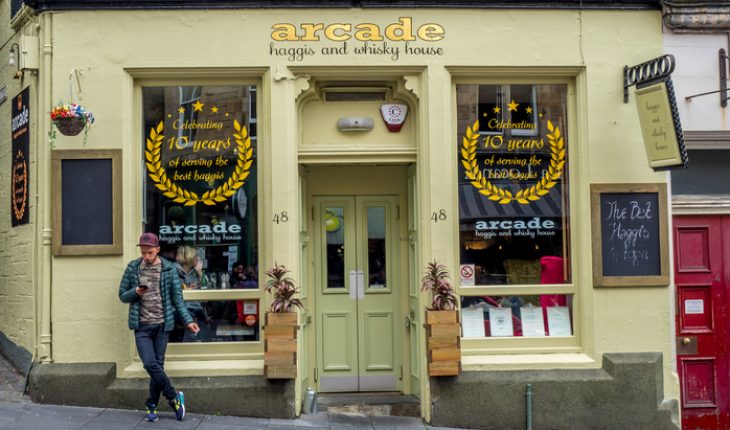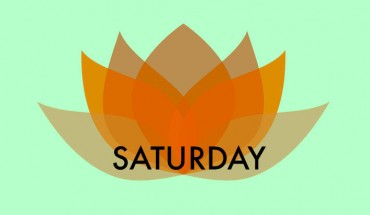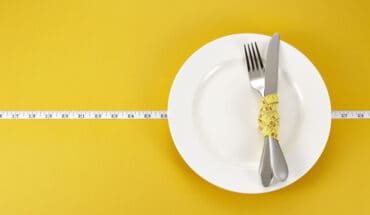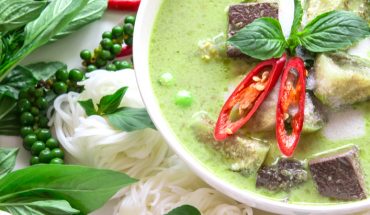Tonight around the world Scottish people will celebrate Burns Night by dining on traditional fare – haggis. Burns night commemorates the life of the poet Robert Burns, who was born on January 25th 1759. Although his best known work is Auld Lang Syne, Burns also had space in his heart for the bulbous haggis. Indeed he wrote the poem Address to a Haggis which starts “Fair fa’ your honest sonsie face. Great chieftain o’ the pudding race!” The first supper was held in memoriam by Burns’s friends, at Burns Cottage, on the fifth anniversary of his death on 25th January 1801. The group enjoyed the evening so much that they met again every year and Burns supper reciting the Bard’s poetry became a regular happening. At the end of Haggis poem, a whisky toast is proposed to the haggis, and people sit down to supper which is traditionally served with mashed potatoes (tatties) and mashed swede (neeps).
In Burns’s day, Haggis was a favoured dish of poorer people, and poets, as it was filling, yet inexpensive, made from usually discarded leftover parts of sheep.
In Burns’s day, Haggis was a favoured dish of poorer people, and poets, as it was filling, yet inexpensive, made from usually discarded leftover parts of sheep.
Although Scottish haggis is banned in the United States, many of its ingredients are very healthy. First recorded in England circa 1430, the dish is considered Scotland’s national dish and best enjoyed with a dram (a glass of Scotch whisky), particularly as the main course of Burns supper. Traditionally haggis is made from vitamin rich sheep’s heart, liver and lungs, minced with oatmeal, onion and suet and spiced with pepper, salt and herbs and served boiled, baked or fried. Aficionados consider it a savoury pudding. Highland whisky, matured in a cask and full and complex in aroma is the ideal accompaniment for Haggis, as it complements the fattiness of the lamb offal. Sheep’s liver is rich in many vital minerals including iron, copper, the B vitamins, vitamin D and vitamin A.
A downside of feasting on haggis is that the fatty meat may cause heartburn for those with a predisposition to this condition.
Despite President Trump’s Scottish heritage, (his mother, Mary Anne MacLeod hailed from the Outer Hebrides), Scottish Haggis has been banned in the United States since 1971. This is due to a US ban on imports of food containing sheep’s lungs which comprise around 12 per cent of traditional haggis.
Despite President Trump’s Scottish heritage, (his mother, Mary Anne MacLeod hailed from the Outer Hebrides), Scottish Haggis has been banned in the United States since 1971. This is due to a US ban on imports of food containing sheep’s lungs which comprise around 12 per cent of traditional haggis.
In the 1990s’s the US also banned beef imports from the EU following the spread of Bovine SpongiformEncephalopathy (BSE), but lifted this ban two years ago. Despite this haggis remains popular with Scottish immigrants living in America and Canada, especially for Burns night, and they get round the ban by using an artificial casing for their haggis.
There is even a Kosher version of haggis and conforms to Jewish dietary laws.
Haggis hurling, which involves throwing a haggis as far as possible is a traditional Scottish sport: the world record holder is Lorne Coltart who hurled his haggis 217 feet on 11 June 2011. Participating in the sport provides a failsafe tonic against January blues.
If you have a bottle of whisky left over from Christmas, bring it out tonight to ward off bone-chilling January damp and raise a wee toast to the Bard.
- Banishing Blue Monday vibes at the London Art Fair - 21st January 2024
- The Credit Suisse Exhibition: Frans Hals - 7th January 2024
- “Winter Flowers Week” opened by Her Majesty The Queen (Camilla) - 10th December 2023






